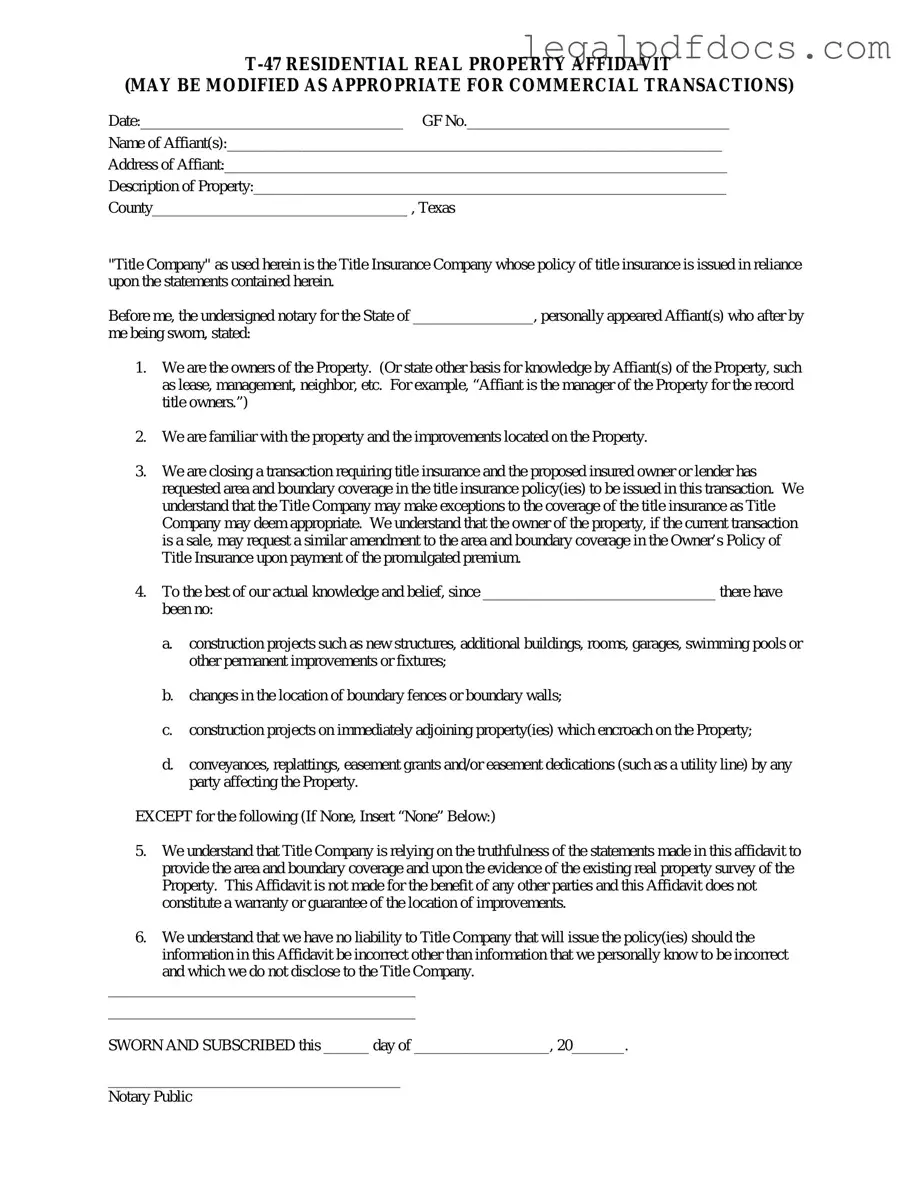Fill Out a Valid Texas residential property affidavit T-47 Template
The Texas residential property affidavit T-47 form is a document used to affirm the ownership and details of a residential property in Texas. This form plays a crucial role in real estate transactions, providing necessary information to lenders and title companies. Understanding its purpose and proper completion is essential for any homeowner or buyer involved in a property transaction.
If you need to fill out the T-47 form, click the button below to get started.
Open Texas residential property affidavit T-47 Editor Here
